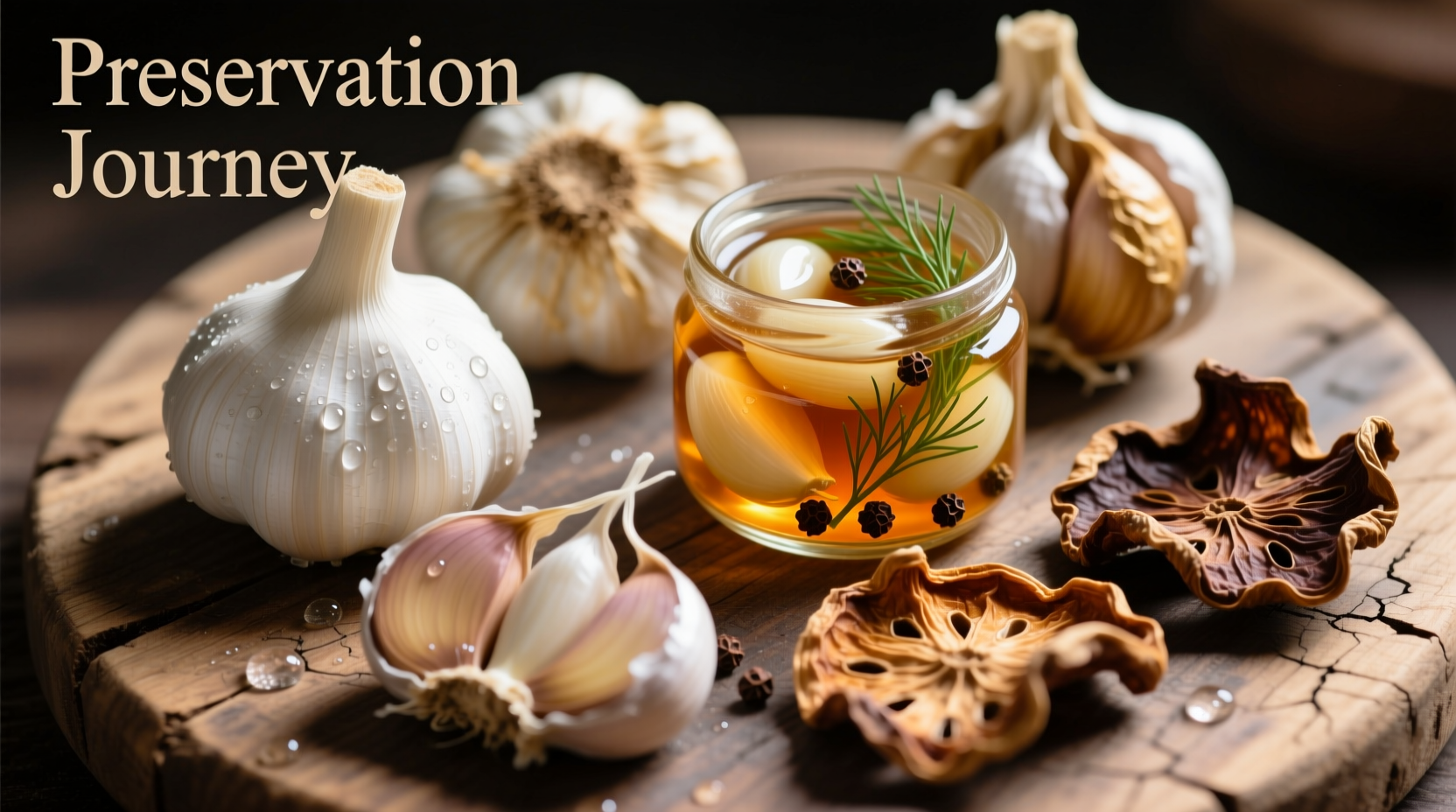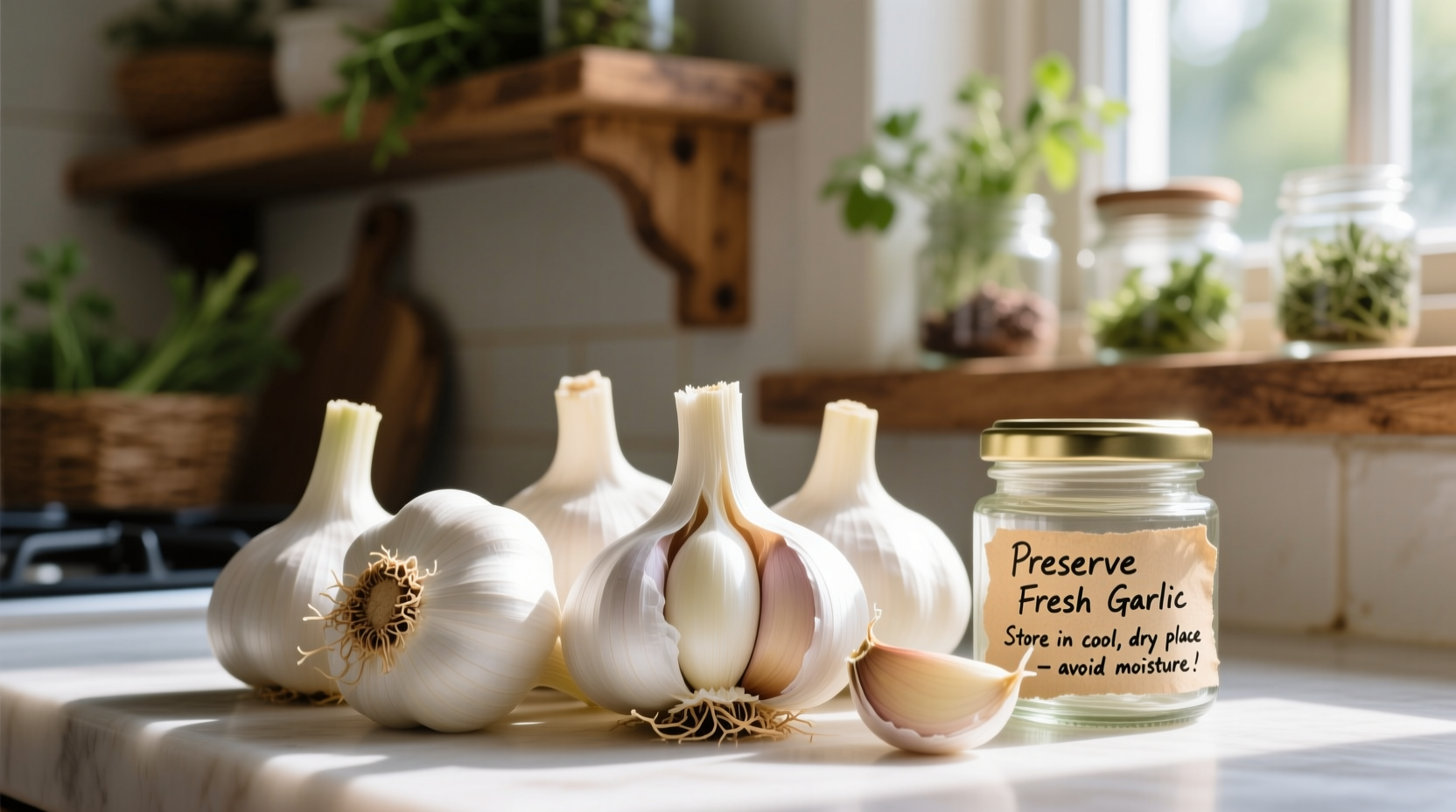Why Proper Garlic Preservation Matters
Garlic transforms dishes with its pungent aroma and complex flavor profile, but its high moisture content makes it prone to sprouting, mold, and spoilage. Understanding the best way to preserve fresh garlic prevents waste while maintaining culinary quality. Most home cooks lose 30-40% of their garlic harvest due to improper storage—a fixable problem with the right techniques.
Garlic Preservation Fundamentals Every Cook Should Know
Before exploring specific methods, understand what makes garlic spoil. Garlic contains allicin, the compound responsible for its distinctive flavor and health benefits. When damaged or exposed to moisture, allicin breaks down, causing bitterness and loss of potency. The FDA confirms that improper storage creates conditions where Clostridium botulinum can grow in low-acid, oxygen-free environments—particularly relevant for oil-based preservation methods.
| Preservation Method | Shelf Life | Flavor Impact | Best For |
|---|---|---|---|
| Room temperature (whole bulbs) | 3-4 weeks | Original flavor intact | Immediate cooking needs |
| Freezing (peeled cloves) | 6-12 months | Slightly milder | Recipes requiring minced garlic |
| Dehydrating | 12+ months | Concentrated, earthy | Spice blends, rubs |
| Fermented (black garlic) | 18+ months | Sweet, umami | Gourmet applications |
Short-Term Preservation: Keeping Garlic Fresh for Weeks
For immediate cooking needs (up to 4 weeks), proper room temperature storage works best. Contrary to popular belief, refrigeration causes premature sprouting in whole bulbs. The University of California Extension recommends storing garlic in a mesh bag or ventilated container at 60-65°F (15-18°C) with 60-70% humidity. Avoid plastic bags—they trap moisture and accelerate mold growth.
Pro tip: Separate cloves only when ready to use. Keeping bulbs intact extends freshness by 50% compared to pre-peeled cloves. Store away from onions, which release gases that speed garlic sprouting.
Medium-Term Solutions: Freezing Garlic for Months of Flavor
Freezing ranks as the most versatile best method to preserve fresh garlic for home cooks needing preserved garlic for regular cooking. Two effective approaches:
- Whole cloves: Peel and freeze in airtight containers (6-12 months)
- Prepared garlic: Mince cloves, mix with equal parts olive oil or vinegar, and freeze in ice cube trays (3-6 months)
The vinegar method adds slight acidity but prevents botulism risk—critical since the USDA Agricultural Research Service warns against storing garlic in oil at room temperature. Frozen garlic works perfectly in cooked dishes but develops texture changes when used raw.

Long-Term Preservation: Dehydration and Fermentation
For extended storage beyond 6 months, dehydration and fermentation offer superior results. Dehydrated garlic maintains potency for over a year when stored properly. Use a food dehydrator at 135°F (57°C) for 8-12 hours until cloves snap cleanly. Store in vacuum-sealed containers with oxygen absorbers.
Fermented black garlic represents the pinnacle of long-term preservation. This traditional Asian technique involves maintaining garlic at 140°F (60°C) with 85% humidity for 30-60 days. The enzymatic transformation creates rich umami flavors while increasing antioxidant levels by 300%, according to research published in the Journal of Agricultural and Food Chemistry.
Avoiding Common Preservation Mistakes
Many home preservation attempts fail due to these critical errors:
- Storing in oil at room temperature: Creates perfect conditions for botulism (FDA warning)
- Using non-ventilated containers: Traps moisture causing mold
- Refrigerating whole bulbs: Triggers premature sprouting
- Washing before storage: Introduces excess moisture
Always inspect preserved garlic before use. Discard any cloves showing blue/green mold, slimy texture, or sour smell—these indicate spoilage that cannot be safely removed.
Choosing Your Ideal Preservation Method
Select your best way to preserve fresh garlic based on cooking frequency and intended use:
- Daily cooking: Freeze minced garlic in oil cubes for instant use
- Batch cooking: Dehydrate for spice blends and rubs
- Gourmet applications: Ferment black garlic for complex flavor
- Immediate use: Store whole bulbs in ventilated containers
Professional chefs at top restaurants typically use multiple methods simultaneously—keeping some garlic fresh, some frozen, and some dehydrated—to ensure optimal flavor for different dishes. This layered approach maximizes versatility while minimizing waste.











 浙公网安备
33010002000092号
浙公网安备
33010002000092号 浙B2-20120091-4
浙B2-20120091-4